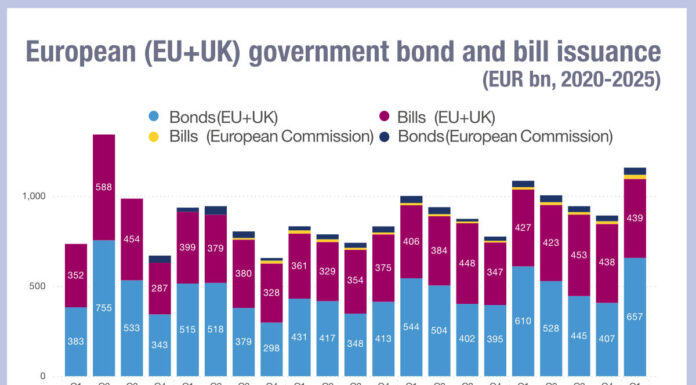FROM THE VILLAGE TO THE CITY.
MAXIMISING THE BENEFITS OF THE ALL-TO-ALL MARKET.
By Mark Goodman, Managing Director, Global Head of Electronic Trading – FX, Rates and Credit at UBS.
Few trends have proved more persistent in modern times than the march of urbanisation. Demographers forecast that by 2050, 66% of the world population will inhabit cities, up from 54% currently.
 The pace of urbanisation seems to be quickening around the globe. In 1990 there were 10 mega-cities – defined as those with 10 million inhabitants or more. That total rose to 28 megacities in 2014, and by 2030 the world is projected to have 41.
The pace of urbanisation seems to be quickening around the globe. In 1990 there were 10 mega-cities – defined as those with 10 million inhabitants or more. That total rose to 28 megacities in 2014, and by 2030 the world is projected to have 41.
To some people, this seems a nightmare scenario. Our imagination has been conditioned to view cities as crowded, frightening places, drawing on the images of urban life found in the Dickensian world of Oliver Twist or in the dystopian future of Blade Runner. To be sure, when economic growth fails to keep up with growth of urban areas, political and social relationships become strained.
But urbanisation also brings social benefits, giving cause for optimism. These benefits are underscored in the work of British physicist Geoffrey West, one of the few people to create a mathematical model of cities.
West’s model suggests that if residents move to a city that is twice as large as their hometown, they become 15% more productive. Even better, thanks to economies of scale, they achieve this increased productivity with lower costs. As a result, when a city doubles in size, its use of resources rises by only 85% – not 100%. Interestingly, West’s model shows this holds true in studies across cities that have developed completely independently of each other.
These benefits flow from the effects of network – the result of us all running around faster and bumping into each other. Not surprisingly, these multiplying interactions of human beings drive efficiencies, as well as speed, creativity and innovation. Adding to the effect is the broader, more immediate access to goods and services in an urban setting.
How does this relate to liquidity in fixed-income markets? One way to think of the traditional structure of these markets is to compare it to life in a village. Residents are isolated with fewer interactions, walled off from the benefits of large networks. In this traditional market structure, clients are limited to a mostly one-way engagement with their brokers. Clients request a price, the broker takes on the risk, and then unwinds that risk in the interdealer market.
The limitations of a market based on bilateral trading are not unlike those found in village life. The village works perfectly well until the local shop starts running short of supplies. That is effectively the case with the traditional market structure. New regulations have resulted in dealers reducing their inventories of securities available to trade. Clients find that they need either to broaden their interactions or compete for the increasingly limited supply of liquidity, with the inevitable impact on cost. That signals that it is time to consider a move to the city – in this context, to the all-to-all market.
A villager, used to relying on a few local shops, moves to the city, where he or she can roam the aisles of supermarkets or seek out a specialty boutique. Their choice is vastly expanded, and the ability to access the selection is significantly more efficient. Far more merchants of different types are competing for their business. Inspired by their interactions the villager may even take the opportunity to set up their own business, knowing they have easy access to a broad and diverse market for their goods.
The benefits of the all-to-all markets are only beginning to be realised. Dealers are warehousing less risk, so are less vulnerable to systemic shocks and the network is no longer dependent on a single dealer to operate. Investors see a greater array of prices and more competition for their trades. This translates into cost efficiencies that make it easier for investors to generate the returns their clients expect. And all these interactions spur further growth and innovation, bringing new entrants and changing the behaviour of existing users.
But new challenges come with the benefits. The ‘urban’ world of all-to-all trading is a far more complex landscape, with a new set of risks and opportunities. In this ‘city’ of multiple sources of liquidity, it takes new capabilities to realise the advantages of the network. To operate in this environment with confidence, investors require:
• A comprehensive view of the prices available.
• Cost-efficient access to the appropriate venues, with clarity on what types of liquidity they are engaging with.
• The ability to execute trades in today’s electronic markets with minimal impact and information leakage.
In this new ‘urban’ market structure, our job is to build the network of liquidity for our clients. This means that we either create explicit all–to–all networks – such as UBS Bond Port for the credit community, or, in rates, link clients to Swap Exchange Facilities or futures exchanges. This expands clients’ interactions, allowing them to contribute as well as take liquidity. Then we offer the tools – such as smart order routers and algorithms – that ensure our clients have access to what they want, when they need it, and at a cost that ensures they can continue to deliver returns to their end clients.
Like urbanisation, the trend to an all-to-all market is gathering momentum. Once acclimated to city life and the benefits of its network, few will return to life in the village. Except, perhaps, for a weekend escape.
The above should not be construed as a solicitation or an offer to buy or sell any financial instrument. UBS Bond Port is not available in all jurisdictions.
©TheDESK 2016
©Markets Media Europe 2025






















